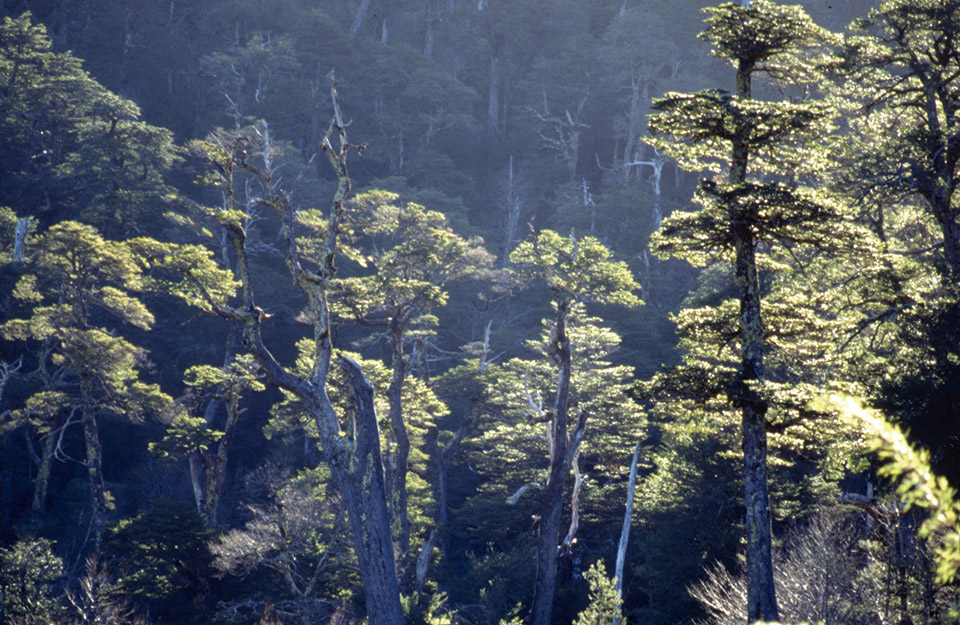
The longest-lived tree on the planet, the southernmost palm tree in the world and the tree that grows at the highest altitude in the world. Chile is characterized by its geographical diversity, which gives it a unique variety of flora. On the day of the tree, we present 15 native species characteristic of Chile from north to south, which is just a sample of the natural wealth that runs through the country.
In 2022, Science magazine revealed that the oldest tree in the world could be a thousand-year-old alerce tree that grows in the Alerce Costero park in southern Chile. But our country would not only have the longest-lived tree in the world, but also the southernmost palm tree on the planet and the tree that grows at the highest altitude in the world. Chile is characterized by its biodiversity, due to its geographic and climatic amplitude. According to information from the National Forestry Corporation (Conaf), Chile has 89 species of native trees, of which 42 are endemic (i.e., they only occur in the country), and 7 are protected as natural monuments. On the day of the tree, we present 15 species of native trees representative of Chilean vegetation and where to find them in a tour from the extreme north to the southernmost part of the country.
Queñoa ( Polylepis tarapacana) and high altitude queñoa(Polylepis rugulosa Bitter)
It is the tree that grows at the highest altitude in the world, between 3,900 and 4,700 meters above sea level (masl). This evergreen tree is found along the Andes Mountains in the high plateau of the regions of Arica and Parinacota, Tarapacá and Antofagasta. It is a vulnerable species, and is frequently found near cushions of llareta, a shrub native to the altiplanic regions, known for its resemblance to moss.
Meanwhile, the high altitude queñoa occurs in the province of Parinacota (Arica and Parinacota region), at altitudes between 3,000 and 4,000 meters above sea level. It reaches heights of 3 to 7 meters, presenting thick reddish bark that peels off easily, in a thick and foliated trunk, which gives it great tolerance to freezing. In Chile.
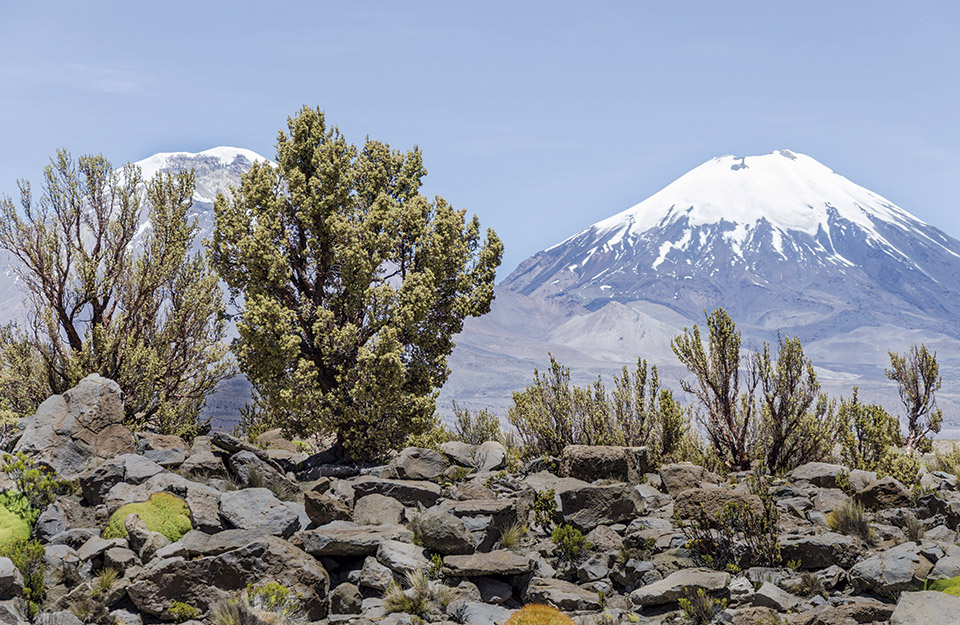
Quillay (Quillaja saponaria Molina)
This species, endemic to Chile and Argentina, is widely present in central and south-central Chile (between the regions of Coquimbo and La Araucanía). It is an evergreen tree whose longevity is between 100 and 150 years, with heights between 20 and 30 meters. It is widely used to produce honey. It is a tree that tolerates very well environments of poor soils, prolonged drought and direct exposure, so it is common to find it in northern exposures and flat sites.
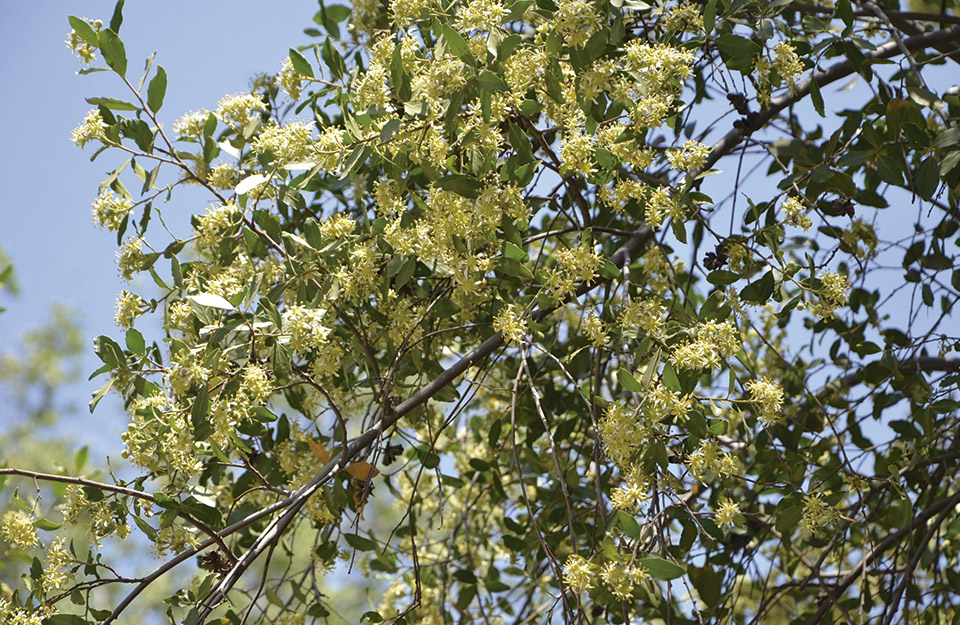
Peumo (Cryptocaria alba Molina)
Endemic and evergreen tree, whose foliage is very dense, with a longevity of more than 400 years, presenting heights of up to 25 meters. It is found from the Coquimbo region to the Araucanía region, in both mountain ranges and the central valley, from sea level to 1,500 meters above sea level (masl). It prefers sites of greater humidity and shade, such as the bottoms of ravines, where it forms groves.
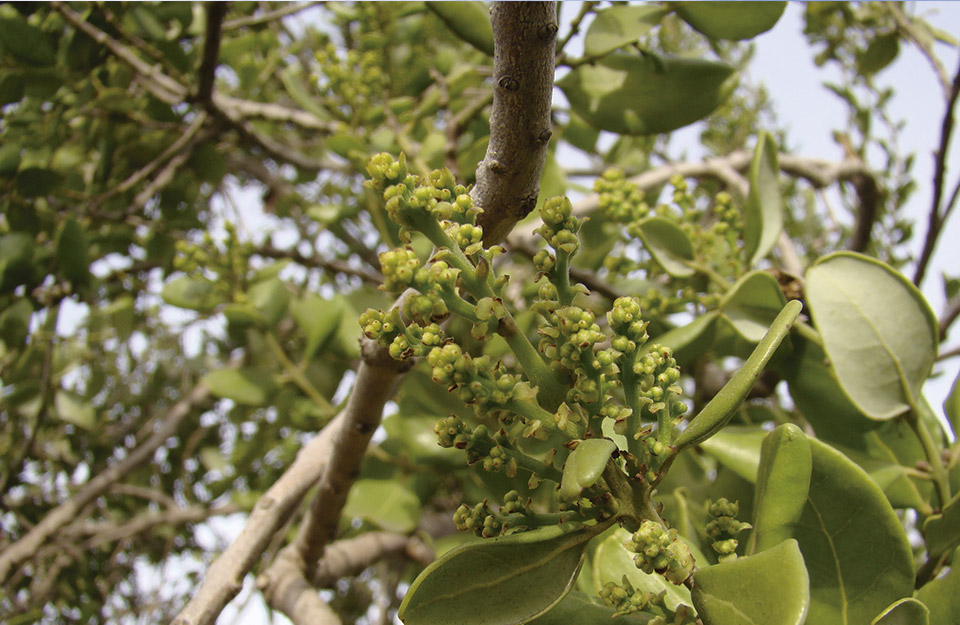
Boldo (Peumus boldus Molina)
This tree is endemic to Chile and is located between the regions of Coquimbo and Los Rios. Its leaves have a strong aroma and are used for gastronomic and medicinal purposes. This medium-sized tree grows between sea level and 1,500 meters above sea level, can exceed 15 meters in height, and is slow growing.

Chilean palm (Jubaea chilensis)
Considered the southernmost palm tree in the world, this evergreen palm can live up to 1,000 years, growing up to 30 meters high. It is native to central Chile, located between the regions of Coquimbo and Maule, below 300 meters above sea level. Palm honey is extracted from it in industrialized productions, and its fruits are edible.

Oak (Nothofagus obliqua)
The oak grows in the temperate forests between the regions of Valparaíso and Los Lagos at altitudes ranging from sea level to 2,500 meters above sea level. It is the only deciduous tree that has red foliage in autumn in these regions, and can reach 50 meters in height. It lives up to 500 years and is also present in Argentina.
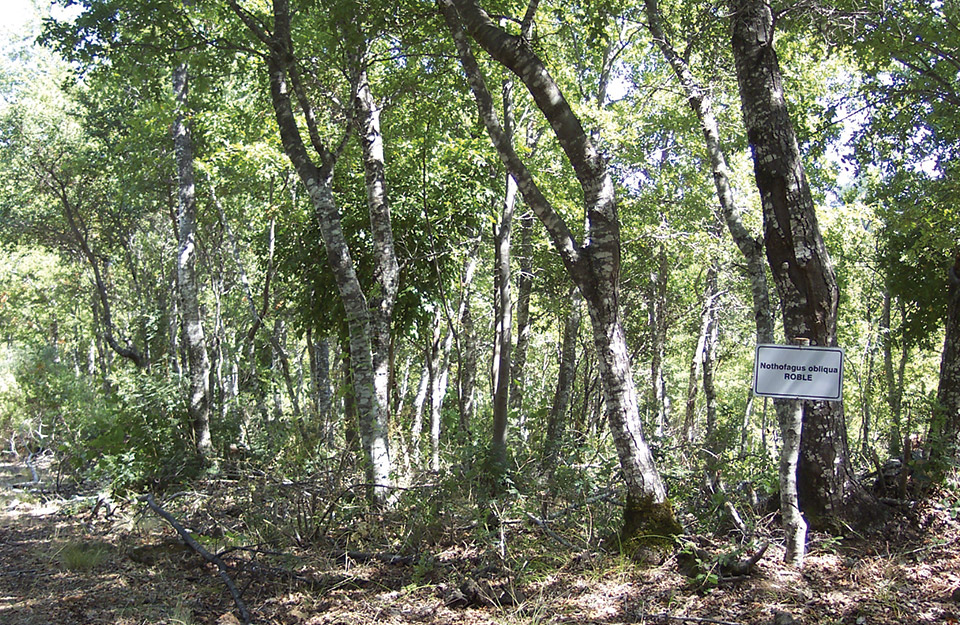
Northern and Southern Acorns(Beilschmiedia miersii and Beilschmiedia berteroana)
Both declared natural monuments in 1995 due to their vulnerability or endangered status, these endemic species are distributed mainly in the coastal mountain range of the Valparaíso and Metropolitan regions (northern acorns) and in the pre-Andean zone and central depression of the Maule and Ñuble regions (southern acorns).
Canelo (Drimys winteri and chilensis)
The canelo is an endemic species, which is naturally distributed between the regions of Coquimbo to Magallanes, at altitudes from sea level to 1,700 meters above sea level. Its flowers have white petals, its fruits are blackish, and its leaves are bright green. It is considered the sacred tree of the Mapuche people, and its bark is widely used in folk medicine.
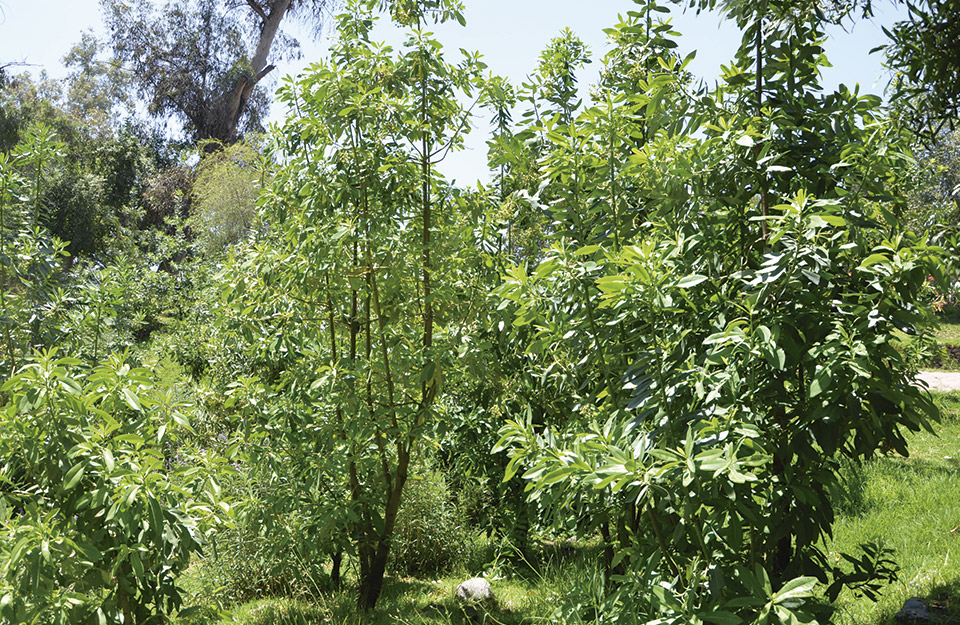
Lingue (Persea lingue)
It grows between the regions of Valparaíso and Los Lagos, mainly in the sun and semi-shade in soils with some humidity, between sea level and 900 meters above sea level. It flowers from September to January, its fruits ripen from March, and it can reach up to 30 meters in height.
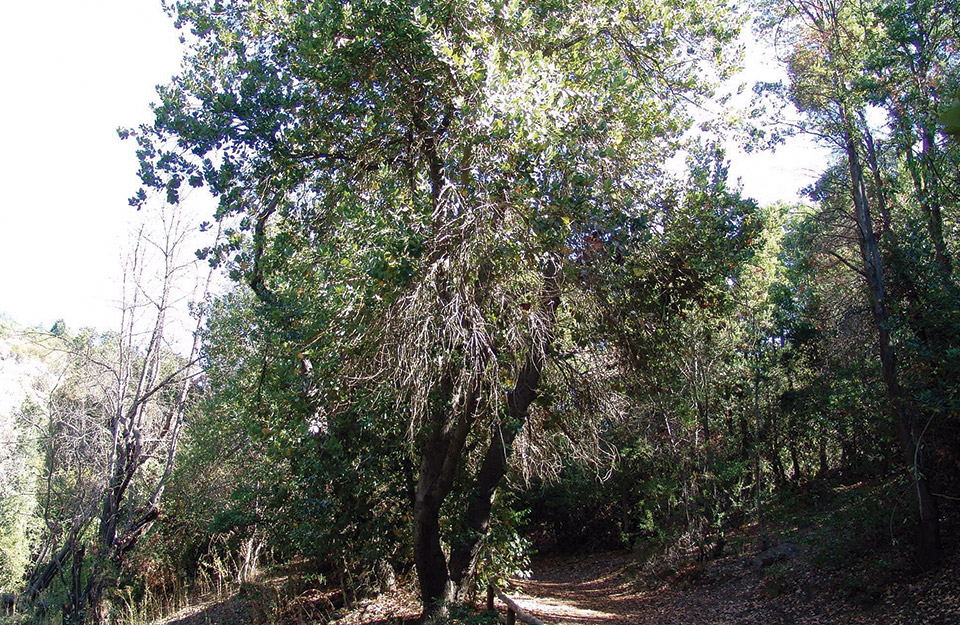
Queule (Gomortega keule)
Declared a natural monument in 1995, this endemic evergreen tree is distributed mainly in the coastal area of the regions of Maule to Biobío, growing from sea level to 700 meters above sea level. It is a tree with a straight trunk and pyramidal crown that usually measures around 15 meters in height.
Pitao or canelillo (Pitavia punctata)
An endemic evergreen tree found in the coastal zone of the regions of Maule, Ñuble, Biobío and La Araucanía, located between sea level and 800 meters above sea level. This tree, declared a natural monument in 1995, can measure up to 15 meters and have a trunk up to 50 cm in diameter. It flowers between October and November, and its flowers are hermaphrodite and white.
Ruil (Nothofagus alessandrii)
The ruil is a deciduous tree endemic to Chile and confined to a small area of the Cordillera de la Costa in the Maule region, between 100 and 500 meters above sea level. Discovered and classified in 1926 by the Chilean botanist Marcial Espinosa, it was declared a natural monument in 1995. Its trunk is straight and gray, and can measure up to 30 meters in height.

Pehuén (Araucaria araucana)
Declared a natural monument in 1990, it is characteristic of the regions of Biobío, La Araucanía and Los Ríos, growing in clay and volcanic soils between 600 and 1,700 meters above sea level. It is a slow-growing and long-lived species, reaching up to 1,000 years. It is an evergreen tree, up to 50 meters high, with a trunk that can measure up to 3 meters in diameter, with branching that begins several meters above the ground. Historically it has been protected by the Mapuche (Pehuenches), who used its seed, the pine nut, as the basis of their food, to make flour, fermented beverages, among others.

Andean larch ( Fitzroya cupressoides)
A natural monument since 1976, it can measure up to 45 meters tall, and can be found in the Coastal Alerce Park (Los Ríos region), in humid terrain and rocky slopes, between 100 and 1,400 meters above sea level. It is the second longest-lived species in the world, and in fact, this year a study by Chilean researchers Jonathan Barichivich and Antonio Lara was published in the journal Science, with the support of institutions such as the Corporación Alerce, the Universidad Austral de Chile and Conaf, which determined that a specimen of this species could be the oldest tree in the world. It is the so-called "millenary alerce" or "great grandfather", located in the Coastal Alerce Park, which would be 5,484 years old.

Coigüe de Magallanes (Nothofagus betuloides) / Coihue (Nothofagus dombeyi) / Coigüe de Chiloé (Nothofagus nítida)
The Coigüe de Magallanes grows between the regions of Los Riìos and Magallanes, at altitudes ranging from sea level to 1,500 meters above sea level. Coihue, on the other hand, has a natural distribution that includes the regions of O'Higgins to Aysén, located at altitudes ranging from 1,500 meters above sea level to 1,500 meters above sea level.
